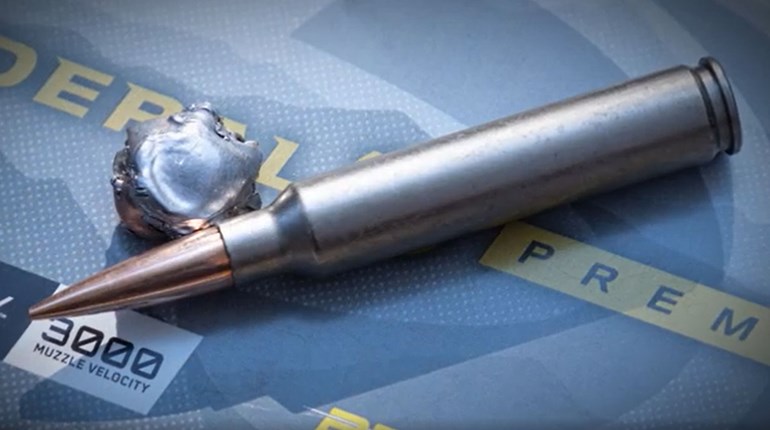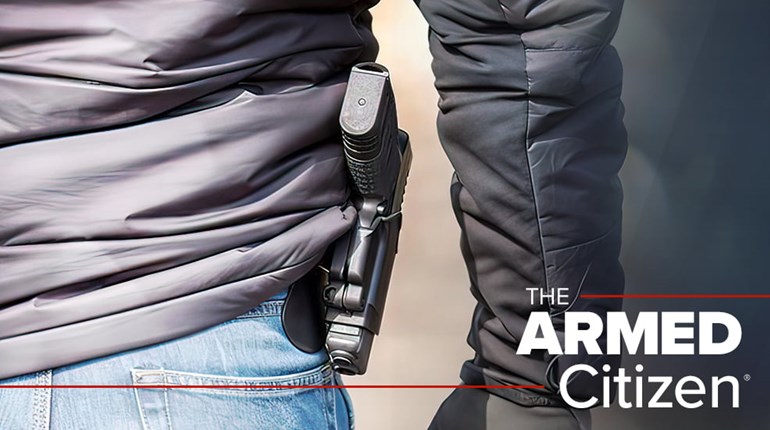
In his first week in office, President Joe Biden (D) signed a stack of 22 executive orders. By mid-March, he had signed more than 50. Just before this went to print, four Democrat senators, led by Sen. Robert Menendez (D-N.J.), sent a letter to Biden asking him to take executive action on guns.
Gun-control groups, and the politicians who side with them, see their chance and they are impatient. The drumbeat from the mainstream media has been particularly incessant. They want to know when Biden will move against American citizens’ Second Amendment rights.
Meanwhile, as this was being written, Democrats in the U.S. House of Representatives had been busily pushing various pieces of gun-control legislation forward, laws that would massively infringe upon Second Amendment-protected rights. The most-egregious has been H.R. 127, the “Sabika Sheikh Firearm Licensing and Registration Act,” a jaw-dropping list of unconstitutional provisions that includes a national gun registry, requirements for psychological evaluations for anyone who wants to keep their guns and much more.
Though Democrats have 50 votes in the U.S. Senate, plus Vice President Kamala Harris (D) ready to break Senate ties, Democrats are likely blocked from getting H.R. 127 and other infringements on our rights passed into law (as this was being written, anyway), as they would need 60 votes to overcome a filibuster in the Senate.
Democrats could use the “nuclear option” to kill or weaken the filibuster in the U.S. Senate, but to accomplish this, they need Sen. Joe Manchin (D-W.V.) and Kyrsten Sinema (D-Ariz.) to give in. Both Manchin and Sinema have publicly rejected the idea of eliminating the filibuster entirely, but there is still a concerted effort in the Democrat caucus to at least limit the use of the filibuster, which could obviously have dire consequences for gun owners.
Still, whether or not they can end the filibuster, the executive-action route is still there. So, okay, without Congress, how much can a president do to our constitutional rights?
Article II, Section 3, of the U.S. Constitution says the president “shall take Care that the Laws be faithfully executed… .”
Just before this, in Section I, the U.S. Constitution says that before the president may take office they must “take the following Oath or Affirmation: ‘I do solemnly swear (or affirm) that I will faithfully execute the Office of President of the United States, and will to the best of my Ability, preserve, protect and defend the Constitution of the United States.’”
This should restrain a president to the law, but there is a lot of room for interpretation in many of our laws—hence the power to “take Care that the Laws be faithfully executed.”

Such is why much of the brilliance of the U.S. Constitution is in its brevity. It’s an ancient maxim that “more law equals less justice”—this saying is so old, the Ancient Roman statesman Cicero cited it as an old saying over 2,000 years ago. Clearly, it was known to the Founders that a longer document with more-nuanced explanations would not reign in a federal government, but would likely just present more openings between the words for those who simply see the U.S. Constitution as an impediment to their power.
In the more than two centuries since the U.S. Constitution was written, court rulings have attempted to answer just how constrained a president is when it comes to their executive orders. Basically, the U.S. Supreme Court has held that executive orders must be supported by the U.S. Constitution or by Congress delegating authority to the executive branch through legislation.
“The president may issue lawful executive orders to the federal bureaucracy, but not to the citizens of the United States,” says Stephen P. Halbrook, an attorney who specializes in the Second Amendment and who is a contributor to this magazine. “During the primary, Kamala Harris thought she could dictate new federal gun laws if Congress failed to act in the first 100 days of her administration. She may think she’s now the president-in-waiting, but she’s in for a rude awakening if she still holds that fantasy,”
Halbrook is looking to the clear constraints that the Second Amendment of the U.S. Bill of Rights places on the federal government, which, since the U.S. Supreme Court ruled in McDonald v. Chicago (2010), also restricts state and local governments.
There is a rich history behind Halbrook’s legal opinion.
In 1798, then-President George Washington issued the first executive order. He did so to instruct the heads of U.S. agencies “to impress me with a full, precise and distinct general idea of the affairs of the United States” within their departments.
Since then, with the exception of one president, every president has issued executive orders; for example, President Abraham Lincoln (R) used this power to issue the “Emancipation Proclamation” in 1862.
Still, until the early 1900s, executive orders were mostly just used to direct the federal bureaucracy. This changed in the twentieth century. President Franklin D. Roosevelt (D), in fact, used this power to write a record 3,522 executive orders, many of which challenged or exceeded the limits of his authority.
Incredibly, in 1944, the U.S. Supreme Court upheld President Roosevelt’s Executive Order 9066, which authorized the rounding up of people of Japanese ancestry (two thirds of whom were U.S. citizens) living in the United States. There were no trials for these people. By the power of a president’s pen, these people were imprisoned and their property was often stolen in the process. This was a clear a violation of the right to due process and the right to equal protection under the Fourteenth Amendment. Nevertheless, the Court decided the threat these people represented was a good enough reason to uphold Roosevelt’s executive order.
So, obviously, executive orders can be dangerous to American liberty, especially if the high court goes along with them. Theoretically, all that is needed is a “crisis,” judges who’ll go along with the notion that a president needs some latitude and some connection to an actual law for a president to effectively pass a law without congressional approval.
Given the current makeup of the U.S. Supreme Court—thanks in no small part to former President Trump’s nominees—it is difficult to imagine today’s Court allowing a president to simply take away constitutionally protected freedoms.
Still, Biden might think there is room at the margins.
Indeed, in 1989, President George H. W. Bush (R) used an executive order to ban the importation of “43 types of semi-automatic assault rifles, including the Chinese-made AK47 and Israeli-made Uzi carbine.” The Gun Control Act of 1968 allowed importation of firearms for sporting purposes, and Bush decided these 43 guns had no sporting purpose.
So could Biden do something similar to restrict popular semi-automatics that are currently lawful to own? Perhaps, but there would be a clear constitutional challenge. The U.S. Supreme Court’s D.C. v. Heller (2008) decision ruled that the Second Amendment protects firearms that are in “common use,” and, as there are now about 20 million AR-type rifles—and perhaps hundreds of millions more of other semi-automatics—in American citizens’ hands, any honest court would invalidate such an executive order today.
And it would need to be a court challenge (or the pen of a new president), as Congress can’t overturn an executive order. Congress, however, can remove funding to implement an executive order, but, given the makeup of the current Congress, it seems doubtful they’d use the power of the purse to dissuade this president from infringing on this constitutional right.
In the past, this power has sometimes been checked by the U.S. Supreme Court; for example, during the Korean War, steel workers threatened to go on strike. In response, President Harry S. Truman (D) issued Executive Order 10340 to seize most steel mills. He claimed that a strike would endanger national security. In this case, the U.S. Supreme Court ruled that this power to seize private property was beyond the president’s authority.
In other cases, the U.S. Supreme Court has upheld executive orders that have some connection to a president’s lawful authority. In Trump v. Hawaii (2018), the Court upheld Proclamation 9645 (proclamations being a type of executive order) that limited entry from eight countries that were regarded as doing a poor job of identifying potential terrorists. Most of these were Islamic-majority nations, but one was North Korea. The Court concluded that the President’s authority to exclude persons who were a danger to national security included this power.
So then, could Biden ban handguns by executive order? Certainly not, as the Heller decision determined that handguns were protected by the Second Amendment. What about “assault weapons” and magazines exceeding 10 rounds? Biden could claim there is a crisis caused by allowing these guns to be in private hands, but he has no statutory or constitutional authority to point to, and these types of firearms are clearly protected by the Second Amendment, so it is difficult to see a majority of the current justices on the U.S. Supreme Court allowing such an infringement of the peoples’ constitutional rights to stand.
Such a loss would embarrass President Biden, and this move would stir up a lot of freedom-loving voters—if indeed, they still need stirring up—as we move toward the 2022 midterm elections. It would therefore be a political gamble for Biden. Perhaps he would hope that, as the U.S. Supreme Court has declined to rule on a gun case for more than a decade despite having important chances to do so, the high court would pass again.
The mainstream media would be on Biden’s side. But a majority of the justices on the U.S. Supreme Court have pro-Second Amendment rulings on their records and, in the recent past, several justices have loudly protested the Court’s reluctance to take a new case to enforce its Heller decision or to resolve Second Amendment disagreements between lower courts.
So it seems more likely that Biden will use his pen to order the Bureau of Alcohol, Tobacco, Firearms and Explosives (ATF) to make certain rule changes that interfere with our rights. He might also order regulatory agencies, as former President Barack Obama (D) did, to bully the financial-services sector into terminating business relationships with gun stores and manufacturers. He might also try to expand rules to deprive Second Amendment rights from veterans who need help with their financial affairs by automatically adding their names to the FBI’s National Instant Criminal Background Check System (NICS).
It isn’t a leap to say the creative legal minds in the gun-control organizations the Biden administration listens to are now dreaming up new avenues to attack our freedom, or that Biden’s many officials are doing the same thing.
Clearly, if there ever was a time when America’s millions and millions of gun owners need to stay together behind this association, this is it. To stay involved, sign up for NRA Grassroots Alerts at nraila.org/grassroots-alerts and log on to the NRA’s A1F.com and NRA-ILA.org to stay up to date on what’s happening. Then, when your voice is needed, please contact your legislators.


































